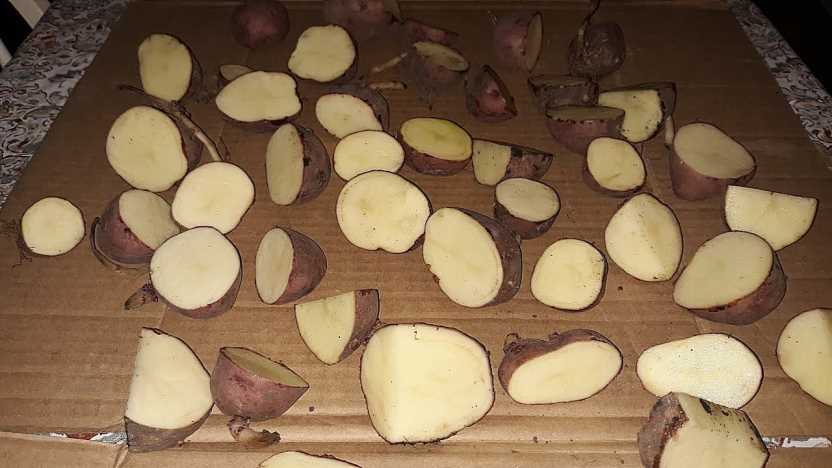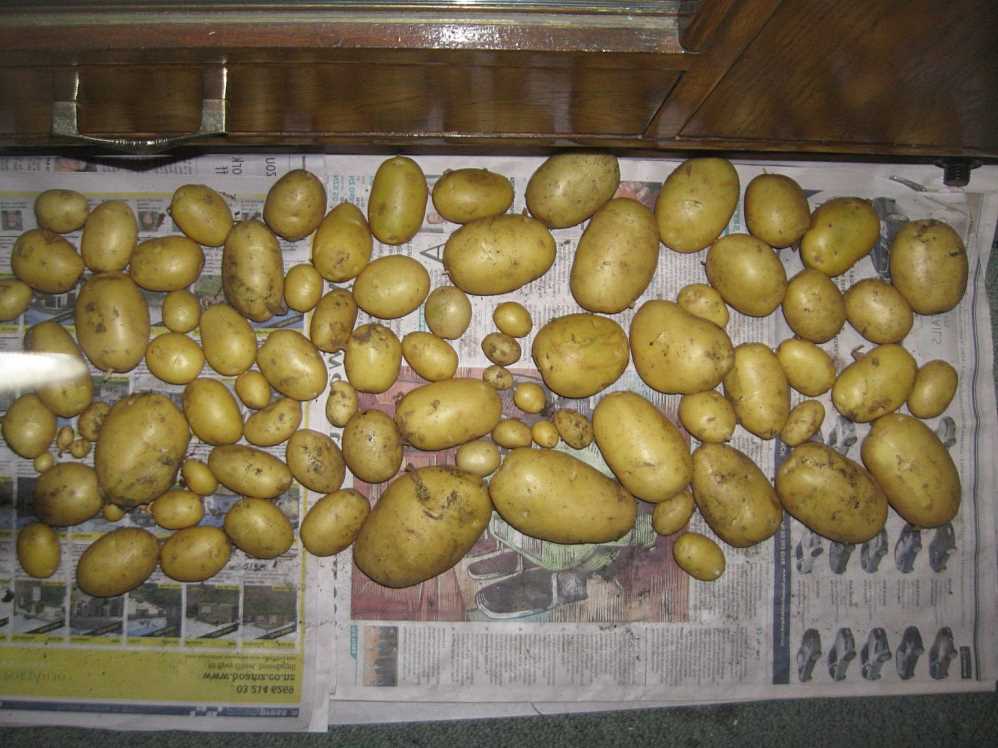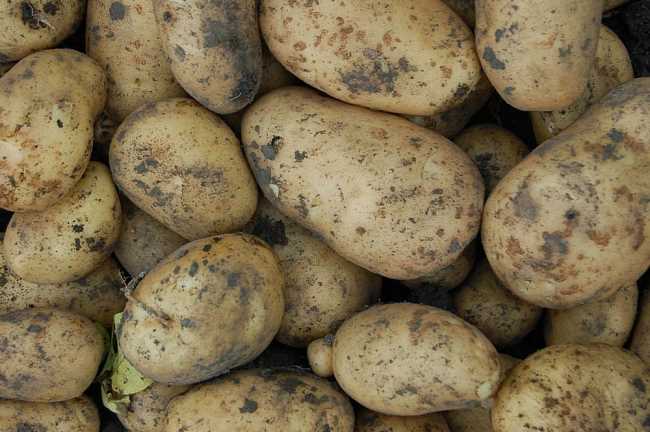 Are you tired of reaching into your pantry only to find sprouted, mushy potatoes? Look no further! In this guide, we’ll show you how to preserve and enjoy the freshness and flavor of potatoes through the art of curing. Say goodbye to bland and lackluster spuds, and say hello to a pantry filled with deliciousness! Curing potatoes not only extends their storage life but also enhances their taste and texture. It’s time to unlock the secret to potato perfection!
Are you tired of reaching into your pantry only to find sprouted, mushy potatoes? Look no further! In this guide, we’ll show you how to preserve and enjoy the freshness and flavor of potatoes through the art of curing. Say goodbye to bland and lackluster spuds, and say hello to a pantry filled with deliciousness! Curing potatoes not only extends their storage life but also enhances their taste and texture. It’s time to unlock the secret to potato perfection!
So, what exactly is potato curing? Well, it’s a process that involves carefully controlling the temperature, humidity, and air circulation to promote the potato’s natural healing abilities. By creating the ideal environment, you can transform ordinary potatoes into flavor-packed delights that will make your taste buds dance with joy. Let’s dive into the world of potato curing and discover the numerous benefits it offers.
Understanding the Potato Curing Process
Before we delve into the nitty-gritty of potato curing, let’s understand what it entails and why it’s essential. Potato curing is the controlled drying process that allows the potatoes to heal and develop a protective layer on their skin. This layer seals in moisture and prevents the potatoes from drying out, resulting in a longer storage life.
Several factors influence the success of potato curing. Temperature and humidity play a crucial role, as the right conditions stimulate the healing process while discouraging rot and disease. Additionally, proper air circulation ensures that moisture is distributed evenly, preventing the formation of mold or moisture-related issues. Lastly, the duration of curing varies depending on the potato variety and the desired outcome.
But before you dive into the curing process, a little preparation is necessary. Start by harvesting your potatoes when the skin has set and cured, typically around 10 to 14 days after the foliage has died back. Once harvested, gently brush off excess soil and sort the potatoes, removing any damaged or bruised ones. Healthy potatoes are the key to successful curing!
How to Cure Potatoes: Step-by-Step Guide
Now that you’re well-versed in the basics, let’s dive into the exciting part – the potato curing process itself! Follow these simple steps, and you’ll be well on your way to preserving and enjoying flavorful spuds:
Step 1: Preparing the Curing Area
Choose a suitable location for your curing area – a cool, dark, and well-ventilated spot is ideal. Basements or cellars often work well, as they provide the necessary conditions. Adjust the temperature to around 45 to 60 degrees Fahrenheit (7 to 15 degrees Celsius) and maintain a humidity level of 85 to 95 percent. These conditions will help the potatoes cure without drying out or becoming too moist.
Step 2: Arranging Potatoes for Curing
Spread your potatoes in a single layer, ensuring they are not touching one another. This allows for proper air circulation and reduces the risk of moisture buildup. Remember to avoid using bruised or damaged potatoes, as they can spoil quickly and affect the other potatoes. It’s all about creating the perfect potato environment!
Step 3: Monitoring and Maintaining Optimal Conditions
Regularly check the temperature and humidity levels in your curing area. Use a thermometer and hygrometer to keep track of these factors and make adjustments as needed. If the temperature or humidity deviates from the desired range, take appropriate measures to restore the optimal conditions. This might involve adjusting ventilation or adding moisture-retaining materials.
Step 4: Curing Duration
Determine the ideal curing period based on the potato variety and your preferences. Generally, curing lasts for 2 to 4 weeks. Keep an eye out for signs of cured potatoes, such as healed skin, firm texture, and a slightly sweeter aroma. Once these indicators are present, your potatoes are ready to be enjoyed!

Benefits of Cured Potatoes
The efforts put into potato curing yield fantastic rewards. Let’s explore the benefits that come with curing your potatoes:
Enhanced Flavor and Texture
Cured potatoes boast a richer, more pronounced flavor and a firmer texture compared to their uncured counterparts. The curing process allows the natural sugars in the potatoes to develop, resulting in a sweeter and more satisfying taste. So get ready for potato dishes that will make your taste buds dance with delight!
Extended Storage Life
By curing your potatoes, you significantly increase their storage life. Instead of reaching for potatoes covered in sprouts and soft spots, you can enjoy fresh and firm spuds for an extended period. Say goodbye to unnecessary waste and hello to potatoes that are ready whenever you need them!
Reduction of Disease and Rot
The controlled environment created during the curing process helps to minimize the risk of disease and rot. Proper curing conditions discourage the growth of bacteria, fungi, and other pathogens that can cause spoilage. With cured potatoes, you can bid farewell to unpleasant surprises when you reach for a potato from your stash!
Tips and Best Practices for Potato Curing
To make your potato curing experience even more successful, keep these tips and best practices in mind:
– Choose potato varieties that are known for their good storage qualities. Some popular options include Russet, Yukon Gold, and Kennebec.
– Store your cured potatoes in a dark and cool place, ideally between 35 to 40 degrees Fahrenheit (2 to 4 degrees Celsius). Avoid storing them near onions or apples, as these can accelerate spoilage.
– Avoid common mistakes, such as washing the potatoes before curing or using damaged or diseased potatoes. These can lead to undesirable outcomes and compromise the success of the curing process.

Recipes and Ideas for Enjoying Cured Potatoes
Now that you’ve successfully cured your potatoes, it’s time to indulge in some mouthwatering dishes! Here are a few recipe ideas to inspire your culinary adventures:
– Roasted Cured Potatoes: Toss your cured potatoes with olive oil, salt, and your favorite herbs. Roast them in the oven until golden brown and crispy. The result? A heavenly side dish that pairs perfectly with any meal!
– Mashed Cured Potatoes: Boil your cured potatoes until fork-tender, then mash them with butter, milk, and a sprinkle of salt. The velvety smoothness and rich flavor will make these mashed potatoes a family favorite!
– Cured Potato Salad: Cube your cured potatoes and mix them with a zesty dressing, crunchy vegetables, and fresh herbs. This refreshing and tangy potato salad will be the star of your summer picnics!
Conclusion
Congratulations! You’re now equipped with the knowledge and know-how to preserve and enjoy fresh, flavorful potatoes through the art of curing. Remember to create the optimal curing environment, monitor the conditions diligently, and be patient as your potatoes transform into culinary wonders. Enjoy the enhanced flavor, extended storage life, and disease-free spuds that result from your efforts. So go forth, cure those potatoes, and savor the delicious rewards!
Leave a Reply